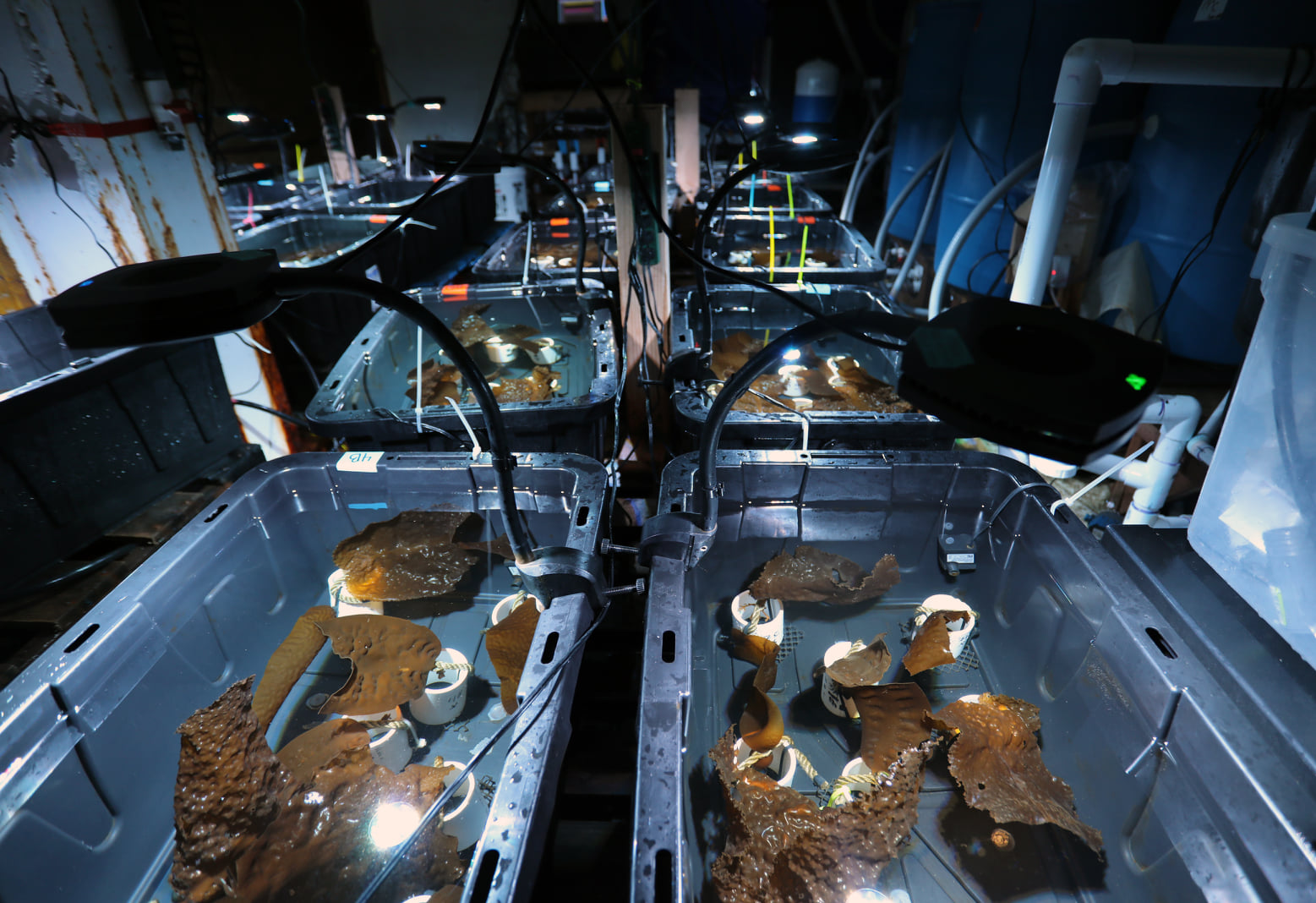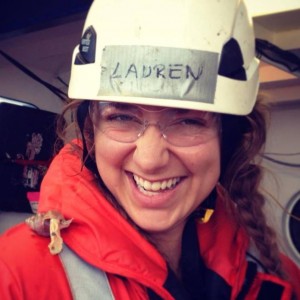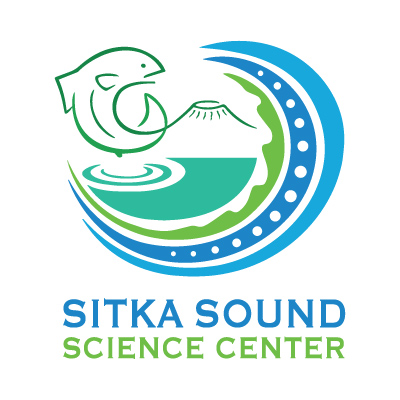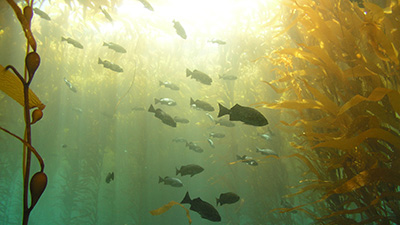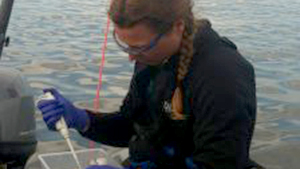 Kelp Forests
Kelp Forests
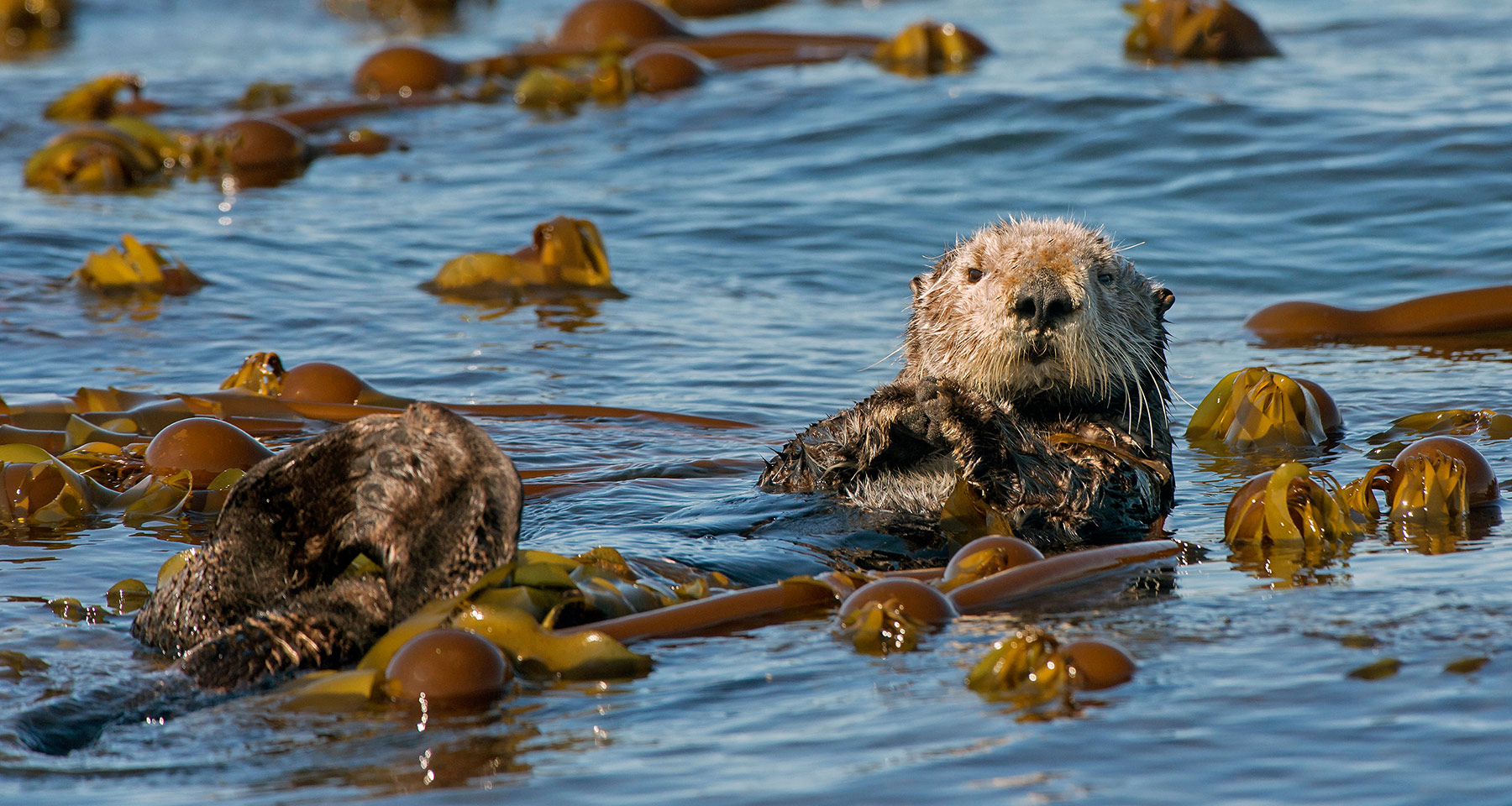
Kelp forests provide food, nursery areas, and shelter for commercially and recreationally important fish species. They are also a key habitat for sea otters.
What We Know
Alaska’s coastal oceans naturally undergo large swings in pH and temperature throughout the seasons of the year, providing a ‘natural laboratory’ to study how marine life responds to such change. Current research projects aim to tease apart how the multiple stressors associated with ocean change may interact, resulting in altered growth, nutrition, and feeding rates of important species at the base of the food web. Ultimately, this research will indicate whether certain times of the year may be more stressful to the marine species that compose coastal kelp forest communities, and how these changes may affect other commercially important species.
The seaweed communities that grow among many of Alaska’s coastal ecosystems naturally influence the carbonate chemistry of surrounding waters through photosynthesis during the day and respiration at night (diurnal metabolic activity). During daytime photosynthesis, these algae use up CO2 in the water, which increases local seawater pH and reduces corrosivity. This could potentially benefit kelp forest species that are vulnerable to OA in the immediate vicinity by buffering against acidic conditions in the daytime. However, the natural decrease in pH that happens during nighttime respiration may offset these benefits. Scientists are still researching whether canopies of kelp and other seaweeds will provide an overall refuge for vulnerable species to ocean acidification.
We know that the slow-growing, rosy-colored calcified algae that cover many of Alaska’s rocky coastlines are very vulnerable to dissolution under ocean acidification. These coralline algae help form important nursery habitat for fish and invertebrates on rocky reefs, and they even release chemical cues that signal invertebrate larvae to settle. Often, these are the first colonizing species on bare rock that influence the eventual formation of kelp forest ecosystems. A reduction or loss of coralline algae could have a significant impact on the biodiversity of Alaska’s coastal ecosystems.
Moving up the food web, researchers have found that exposure to projected future winter pH conditions decreases metabolism and growth of the pinto abalone, a common invertebrate grazer in kelp forests. The results suggest that ocean acidification requires pinto abalone to expend more energy to survive. This could cause problems for the abalone in the winter when food is limited. These findings have profound implications for other species throughout the marine food web as well, and highlight the importance of seasonal fluctuations in dietary resources.
Meet the Alaska Kelp Forest Community
Kelp is a type of large, brown algae that grows from the ocean floor. A long stem-like stipe is secured to marine substrate by holdfasts and reaches up to leaves and fronds that are kept afloat by gas bladders. Kelp forests are confined to rocky coastlines where they grow in nutrient-rich, cold, shallow water that allows ample photosynthesis. Although more than 500 species of seaweeds can be found in Alaska, it is the bull kelp and giant kelp that create kelp forest communities along the western Gulf of Alaska, the eastern Bering Sea, and the Aleutian Islands.
Kelp forests in Alaska are home to crustaceans, marine snails, sea urchins, starfish, sea otters, more than 20 species of fish, and many more marine animals and invertebrates. Sea lions and whales are also known to take up residence. Every part of the kelp – from the ocean floor to the stipe thicket and the frond canopy – provides food, shelter, and spawning ground to a thriving marine community.
Kelp is also an expanding mariculture crop in Alaska, where three primary species are grown annually: bull kelp, sugar kelp, and ribbon kelp. To learn more about Alaska’s seaweed industry, visit ADF&G’s profile on Alaska’s Blue Revolution.
Photo Gallery
↓Click to enlarge↓
Recent Studies
Researchers from the Kroeker Lab at the University of California Santa Cruz began a study of the kelp forests and rocky reefs of Sitka Sound in 2015 in order to understand how future ocean acidification and warming will impact high-latitude marine ecosystems. The Kroeker Lab’s research combines year-round environmental monitoring, SCUBA surveys of community structure, and laboratory experiments on a wide variety of important species in Alaskan kelp forest and rocky reef ecosystems. So far, this work has considered how global change may impact local populations of calcified coralline algae, fleshy seaweeds, sea urchins, marine snails, pinto abalone, and Pacific herring.
Coralline algae: Bell et al. 2022
Coralline algae: Bell et al. 2022
- Field work looking at growth rates of high-latitude reef-building coralline algae, and experimental work looking at their response to projected OA conditions in the Gulf of Alaska
Results
- High-latitude coralline algae face dissolution under future winter acidification.
- Seasonal light exposure variation may be too low to impact coralline calcification.
- Interaction with a fleshy alga may not benefit corallines’ response to acidification.
Pinto abalone: Kroeker et al. 2020
Pinto abalone: Kroeker et al. 2020
- Experimental work on the response of pinto abalone (Haliotis kamtschatkana) to projected OA conditions in the Gulf of Alaska
Results
- Future pH conditions decrease metabolism and growth
- Effect on growth is pronounced when their diet is limited to the algal species available during winter
Implications
Because plankton, kelp, and other primary producers depend on sunlight for sustenance, their populations fluctuate seasonally based on how much sunlight is available. In the winter, when there are fewer daylight hours, there are often less of these primary producers available for other creatures to eat. This trophic mismatch in periods of low resource availability is a naturally-occurring phenomenon that consumers in high latitudes have evolved to endure. However, future ocean acidification will lead to energetically costly changes in CO2-driven carbonate chemistry that are most pronounced in the cold temperatures of the winter. This may be especially stressful to calcified marine herbivores like sea urchins and pinto abalone. Preliminary results show that energy demands are likely to change under future conditions of warming and acidification, which are likely to lead to a mismatch between food needs and availability. In other words, as species spend more energy to adapt to and survive changes in ocean acidity, they are likely to require more food than is available to sustain them. Such energetic mismatches could ripple up the coastal food web to affect more invertebrate and fish species.
Researchers
Stories
Sep 2020
UC Santa Cruz Newscenter


